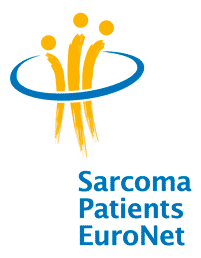Leiomyosarcoma
Leiomyosarcoma (LMS) is one of the most common subtypes of soft tissue sarcoma (STS) and accounts for approximately 24%. LMS start from cells in a type of muscle tissue called smooth muscle or involuntary muscles - the brain has no conscious control over them. They can be found in the walls of muscular organs like the heart and stomach, as well as in the walls of blood vessels throughout the body. Even though LMS are most common in the uterus, abdomen or pelvis, they can basically start anywhere in the body. Read more Leiomyosarcoma.
Sarcoma UK has developed a comprehensive overview of the different types of soft tissue sarcomas:
Angiosarcoma develops from the cells that make up the walls of blood vessels. It can occur anywhere throughout the body but most commonly in the skin, breast, liver, spleen, and in the deep tissues of the body. Angiosarcoma in the skin is often found on the face and scalp.
Desmoid-type fibromatosis (DF) is sometimes called Desmoid Tumour or aggressive fibromatosis. It is a rare type of benign (non-cancerous) tumour. DF develops from fibroblasts. These are a type of cell that provide cell support for the body’s tissues.
Fibroblastic sarcoma develops in the fibrous tissues within the body. It is most commonly found in the limbs, skin (dermofibrosarcoma) and in the trunk.
Gynaecological sarcomas, sometimes shortened to gynae sarcomas occur in the female reproductive system: the uterus (womb), ovaries, vagina, vulva and fallopian tubes. You may also hear the term uterine sarcoma. They can affect women of any age.
Kaposi’s sarcoma is a rare type of cancer that affects the skin, mouth and occasionally the internal organs.
Liposarcoma develops from the fat cells found all over the body. It can occur anywhere throughout the body but most commonly on the trunk, limbs and in the retroperitoneum.
Malignant peripheral nerve sheath tumour (MPNST)
MPNSTs, also known as neurofibrosarcomas, develop in the cells that cover nerves. They can occur anywhere throughout the body. MPNSTs occur mainly in adults.
Retroperitoneal sarcomas occur in the retroperitoneum. This is an area behind the peritoneum, the lining of the abdominal space that covers the abdominal organs. The retroperitoneum is deep in the abdomen and pelvis, behind the abdominal lining, where organs such as the major blood vessels, kidneys, pancreas and bladder are located.
Rhabdomyosarcoma develops in the skeletal or voluntary muscles of the body – the muscles we can control ourselves. It is most commonly found in the head and neck but it also occurs in the abdomen. This is a rare type of sarcoma that affects more children than adults.
Ewing’s sarcoma usually affects the bone; however, this type develops in the soft tissue around the bone. It is sometimes called extra osseous sarcoma – extra means outside, osseous means bone. They are found in the trunk, limbs and the brain.
Soft tissue sarcomas develop in supporting or connective tissue such as the muscle, nerves, tendons, blood vessels and fatty and fibrous tissues.
Synovial sarcoma develops in cells around joints and tendons. Synovial sarcoma can occur anywhere throughout the body but often near the knee. Synovial sarcoma is most commonly associated with young adults.

